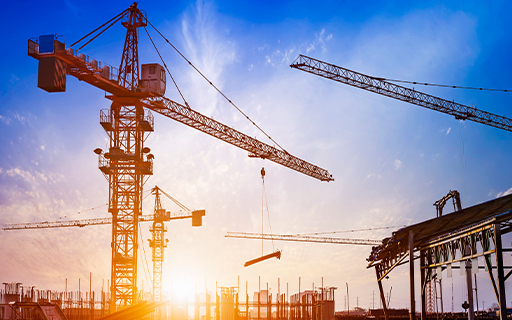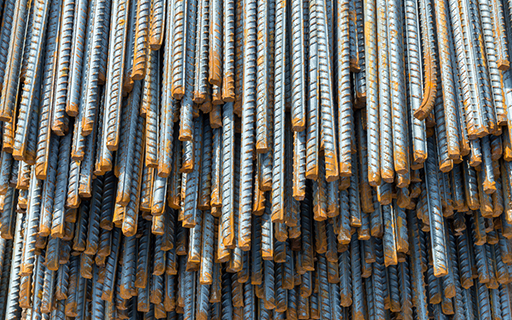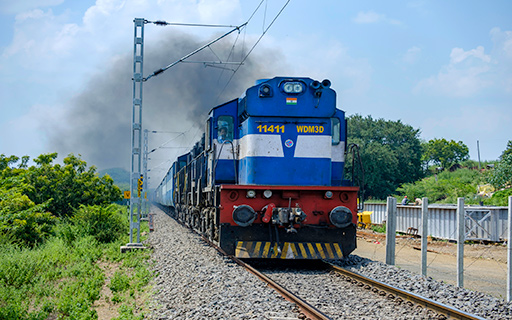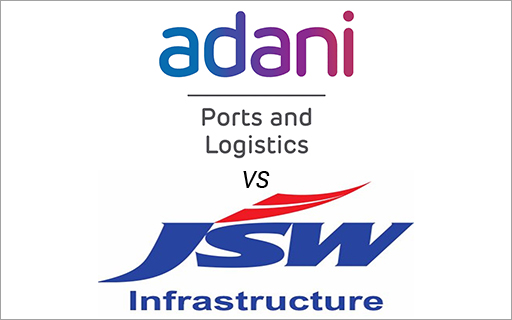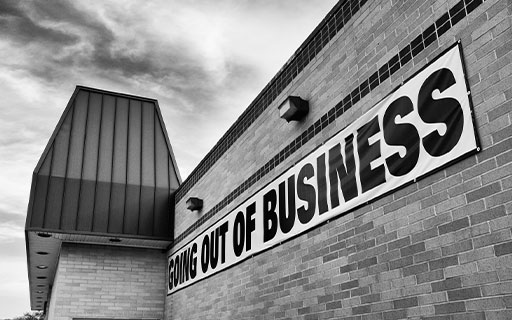- Home
- Outlook Arena
- Best Infrastructure Stocks in India
Best Infrastructure Stocks in India
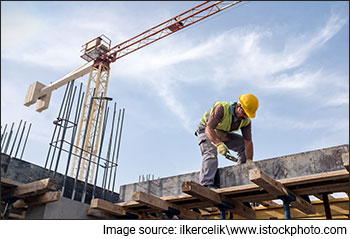
The infrastructure sector in India is an important driver of the country's economic growth.
Given that roads, railways, metros, etc. are an integral part of enhancing the productivity and operations of businesses, robust infrastructure is a must.
However, despite being one of the fastest-growing economies in the world, India is lagging behind the rest of the world with respect to infrastructure development.
To change this, the government of India has been taking various measures in recent years.
Resultantly, the tide has turned after a long time for infrastructure stocks. There's massive capex lined up backed by government's announcements on the production linked incentive (PLI) schemes.
An important thing here is that the benefits of the capex cycle will not be limited to infra sector. Think of the additional cement and steel required to build roads, highways, hospitals, and buildings.
A push to the infra sector directly lifts the gross domestic product (GDP) growth because infrastructure investment has a multiplier effect.
With a steadily rising population, the economy needs a massive amount of spending on constructing new infrastructure and rebuilding the aging assets to meet the needs.
Porter's Five Forces Analysis of the Infrastructure Sector in India
Porter's Five Forces is a model that identifies and analyzes five competitive forces that shape every industry.
These are barriers to entry, bargaining power of suppliers, bargaining power of customers, threat of substitutes and competition within the industry.
A change in any of the forces normally requires a company to re-assess the marketplace.
Let us have a look at how these five forces shape the infrastructure sector -
#1 Barriers to Entry
The most attractive segment is one in which barriers to entry are high as they restrict the threat of new entrants.
Conversely if the barriers are low, the risk of new companies venturing into a given market is high.
In the infrastructure sector, barriers to entry are high, considering the capital intensive nature of the industry and reputation attached to the existing players.
#2 Bargaining Power of Suppliers
The bargaining power of customers is the ability of suppliers to put the firm under pressure. Suppliers may refuse to work with the firm or charge excessively high prices for unique resources.
This is low in the infrastructure industry, because of intense competition amongst them. However, in technology driven high-end segments, suppliers have the upper hand.
#3 Bargaining Power of Customers
The bargaining power of customers is the ability of customers to put the firm under pressure. It is high if buyers have many alternatives and low if they have few choices.
This is low in technology oriented segments. However, fierce competition in power generation and transmission equipment has increased bargaining power of customers.
#4 Competition
For most industries, having an understanding of the competition is vital to successfully marketing a product.
The competition in infrastructure sector is intense among major players. Companies compete on pricing, experience in a particular field, product quality, and capability of handling projects.
However, small companies are trying to revamp their scale and size.
#5 Threat of Substitutes
A substitute product uses a different technology to try to solve the same economic need.
This is low in the infra sector due to the nature of the industry. If a buyer wants to revamp or renovate its existing stock, it is likely to go to the same players.
Porters Five Forces Analysis of the Infrastructure Sector in India
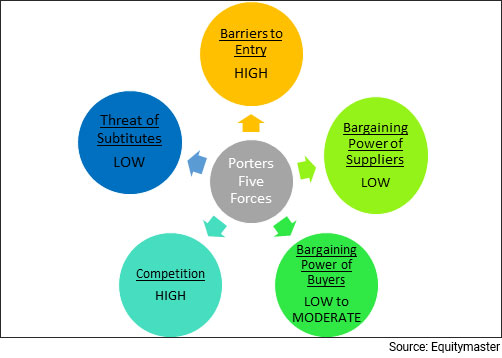
When to Invest in Infrastructure Stocks
Infrastructure stocks are usually risker as their fortunes are prone to economic booms and busts and for this reason, they are often called cyclical stocks.
Generally considered an offensive tactic in investing, cyclical stocks can be used to generate high returns when the economy is doing well.
Therefore, the best time to buy such stocks is at the start of an economic expansion and the best time to sell them is just before the economy begins to slow down. However, before selecting a stock, one must check whether the industry is due for revival or not.
Key Points to Keep in Mind While Investing in Infrastructure Stocks
Here are some key points to take note of before you invest in infra stocks.
#1 Cyclicality risk
An industry cycle is characterized by an upturn as well as downturn. Cyclical businesses do well during an industry upturn and vice versa.
On the other hand, there are some businesses that are not very cyclical. These businesses are immune to changes in industry cycles in the sector and have less risk. In short, if the business is cyclical, higher is the risk.
Infra companies' operations are linked to spending by the government on infrastructure and the expansion plan a company undertakes.
As a result, during times of distress in the Indian economy, government can cut down on investments in infrastructure spending. This can have an adverse impact on infra companies' operations.
To mitigate this risk at certain extent, you could look at companies who have decent export revenues.
#2 Order book
You know it's a good time to invest in infra stocks when all infrastructure-focused firms experience strong order inflows. This could be due to government's big push or any other particular reason.
If the order book position of infra players is adequate, it provides near term revenue visibility.
Along with order book, also check the company's history of execution capabilities and whether it is able to execute at higher pace than others.
#3 Interest rates
For any infra company, interest rate is a big lever for earnings growth because in most cases, they are dependent on borrowed funds.
Infra companies will be able to grow their earnings at a faster pace when there's a reduction in interest rates.
#4 Profitability of the company
Profitability is the primary goal of all business ventures. Without profitability the business will not survive in the long run. So, measuring current and past profitability and projecting future profitability is very important.
Here's a list of top infrastructure companies in India based on their consolidated net profit.
| Rs m, consolidated | Profit After Tax | PAT Margin (%) |
|---|---|---|
| Larsen & Toubro Ltd. | 78,795 | 8% |
| Rail Vikas Nigam Ltd. | 10,872 | 6% |
| GR Infraprojects Ltd. | 7,608 | 10% |
| Ircon International Ltd. | 5,443 | 8% |
| Kalpataru Power Transmission Ltd. | 5,154 | 7% |
| NCC Ltd. | 4,901 | 5% |
| PNC Infratech Ltd. | 4,478 | 7% |
| KEC International Ltd. | 4,344 | 3% |
| KNR Constructions Ltd. | 3,818 | 12% |
| H.G. Infra Engineering Ltd. | 3,388 | 9% |
Data as of March 2022
#5 Debt to equity (D/E) ratio
A company uses both equity and debt to run a business. However, the amount of debt it uses indicates its fixed obligations. Higher the leverage, higher will be the fixed charges such as interest expense which will lower the profitability.
One must look for a debt to equity ratio of one or less than one.
Here's a list of top infrastructure companies in India with a low debt to equity ratio.
| Rs m, consolidated | Debt to Equity (x) | Interest Coverage (x) |
|---|---|---|
| Ircon International Ltd. | 0.00 | 4.21 |
| KNR Constructions Ltd. | 0.00 | 19.99 |
| Likhitha Infrastructure Ltd. | 0.00 | 110.66 |
| PNC Infratech Ltd. | 0.06 | 8.88 |
| NCC Ltd. | 0.20 | 2.32 |
| J Kumar Infraprojects Ltd. | 0.21 | 3.83 |
| Nelco Ltd. | 0.21 | 5.96 |
| H.G. Infra Engineering Ltd. | 0.23 | 9.60 |
| GR Infraprojects Ltd. | 0.25 | 8.72 |
| Larsen & Toubro Ltd. | 0.30 | 5.66 |
Data as of March 2022
#6 Return on Capital Employed (ROCE) ratio
Along with a low debt to equity ratio, a one must look for a high return on capital employed (ROCE).
Return on capital employed measures how much profits the company is generating through its capital. The higher the ratio, the better.
An ROCE of above 15% is considered decent for companies that are in an expansionary phase.
Here's a list of top infrastructure companies in India with more than 15% in ROCE. We have also provided their return on equity (ROE) and return on assets (ROA).
| ROCE (%) | |
|---|---|
| Likhitha Infrastructure Ltd. | 35.3 |
| H.G. Infra Engineering Ltd. | 33.8 |
| KNR Constructions Ltd. | 29.6 |
| GR Infraprojects Ltd. | 21.7 |
| Techno Electric & Engineering Company Ltd. | 19.1 |
| Salasar Exteriors & Contour Ltd. | 17.6 |
| Rail Vikas Nigam Ltd. | 17.0 |
| KEC International Ltd. | 16.8 |
| Kalpataru Power Transmission Ltd. | 16.2 |
| Nelco Ltd. | 16.2 |
Data as of March 2022
#7 Valuations
Investing in stocks requires careful analysis of financial data to find out a company's true worth. However, an easier way to find out about a company's performance is to look at its financial ratios.
Being an asset heavy and cyclical business, the commonly used financial ratios used in the valuation of infrastructure stocks are -
Price to Book Value Ratio (P/BV) - It compares a firm's market capitalization to its book value. A high P/BV indicates markets believe the company's assets to be undervalued and vice versa.
To find stocks with favorable P/BV Ratios, check out our list of stocks according to their P/BV Ratios.
Price to Earnings Ratio (P/E) - It compares the company's stock price with its earnings per share. The higher the P/E ratio, the more expensive the stock.
To find stocks with favorable P/E Ratios, check out our list of stocks according to their P/E Ratios.
#8 Dividend yields
There is no consistent trend of dividends across the industry, with different companies having different dividend policies.
Here's a list of top infrastructure companies in India making healthy dividend payouts.
| Dividend per share (Rs) | Dividend Payout (%) | |
|---|---|---|
| Nirlon Ltd. | 26 | 211.5 |
| Ircon International Ltd. | 2.5 | 43.2 |
| Rail Vikas Nigam Ltd. | 1.8 | 35.1 |
| NCC Ltd. | 2 | 24.9 |
| J Kumar Infraprojects Ltd. | 3 | 11 |
| Kalpataru Power Transmission Ltd. | 6.5 | 18.8 |
| Larsen & Toubro Ltd. | 22 | 39.2 |
| Man InfraConstruction Ltd. | 1.3 | 44.3 |
| Indian Hume Pipe Company Ltd. | 2 | 16.8 |
| KEC International Ltd. | 4 | 23.7 |
Data as of March 2022
For more details, check out the top stocks offering high dividend yields.
Top Infrastructure Stocks in India
Here are the top infrastructure stocks in India which score well on crucial parameters.
#1 L&T
#2 Siemens
#3 ABB India
#4 Tube Investments of India
#5 BHEL
For more details on infra stocks, check out Equitymaster's Powerful stock screener for filtering the best infra stocks in India.
List of Infrastructure Stocks in India
The details of listed infra companies can be found on the NSE and BSE website. However, the overload of financial information on these websites can be overwhelming.
For a more direct and concise view of this information, you can check out our list of infra stocks.
Best Sources for Information on the Infrastructure Sector
India Brand Equity Foundation (IBEF) Infra sector report - https://www.ibef.org/industry/infrastructure-sector-india
National Infrastructure Pipeline - https://indiainvestmentgrid.gov.in/national-infrastructure-pipeline
So, there you go. Equitymaster's detailed guide on the top infra stocks in India is simple and easy to understand. At the same time, it offers detailed analysis of both the sector and the top stocks in the sector.
Here's a list of articles and videos on the infra sector and top infra stocks in India. This is a great starting point for anyone who is looking to explore more about infra stocks and the infra sector.
Disclaimer: This article is for information purposes only. It is not a stock recommendation and should not be treated as such. Learn more about our recommendation services here...
![]() Vijay Kedia Buys 4,000,000 Shares of Reliance Infrastructure. Here's Why
Vijay Kedia Buys 4,000,000 Shares of Reliance Infrastructure. Here's Why
Apr 20, 2024
Data shows that Kedia now holds 1.01% stake in Reliance Infrastructure worth Rs 755 million.
![]() Top 5 Crane Stocks All Set to Ride the Infra Wave
Top 5 Crane Stocks All Set to Ride the Infra Wave
Apr 10, 2024
With massive investments pouring into infra projects, ancillary sectors such as crane are also experiencing a surge in demand.
![]() Top 3 Solar EV Charging Infrastructure Stocks to Add to Your Watchlist
Top 3 Solar EV Charging Infrastructure Stocks to Add to Your Watchlist
Mar 9, 2024
Solar EV charging stations are gradually making their way. Here are four companies to keep an eye on.
![]() 5 Best Infrastructure Penny Stocks in India
5 Best Infrastructure Penny Stocks in India
Feb 5, 2024
While most investors are looking at L&T, and other established names, the bigger opportunity could possibly come from penny stocks within this sector.
![]() Why Steel Exchange Share Price is Rising
Why Steel Exchange Share Price is Rising
Jan 29, 2024
The company is one of the few manufacturers of CRS-grade rebars and supplies to the Indian armed forces as well as to other national infrastructure projects.
![]() Top 7 Railway Ancillary Stocks to Play the Railway Theme in 2024
Top 7 Railway Ancillary Stocks to Play the Railway Theme in 2024
Jan 12, 2024
These railway ancillary companies are the unsung heroes of the railway world, driving modernization and efficiency.
![]() Top 4 Indian Government Midcap Stocks Set for Explosive Growth in 2024
Top 4 Indian Government Midcap Stocks Set for Explosive Growth in 2024
Jan 1, 2024
These midcap giants are poised for gallant growth in 2024. Here's why.
![]() Top 5 Cement Picks for India's Growth Story
Top 5 Cement Picks for India's Growth Story
Dec 22, 2023
After a slowdown in the last decade, there is a revival in cement demand, powered by a confluence of factors.
![]() Why GMR Airports Share Price is Rising
Why GMR Airports Share Price is Rising
Dec 11, 2023
GMR Airports share price spikes around 20% in the past two days. Here's why.
![]() Why IRB Infra Share Price is Rising
Why IRB Infra Share Price is Rising
Nov 9, 2023
IRB Infra stands out as it has low dependency on external subcontracting. Currently, it's sitting on a massive order book.
![]() Mukul Agrawal Adds 5% Stake in Railway Stock that Rallied Over 500% in a Year
Mukul Agrawal Adds 5% Stake in Railway Stock that Rallied Over 500% in a Year
Apr 11, 2024
Here's why the seasoned investor is bullish on this multibagger stock despite 550% rally in a year. Do you own it?
![]() Why IRB Infra Share Price is Rising
Why IRB Infra Share Price is Rising
Apr 8, 2024
IRB Infra shares are up almost 75% in 2024 so far. Here's why the momentum may possibly continue.
![]() Best Ports Stock: Adani Ports vs JSW Infrastructure
Best Ports Stock: Adani Ports vs JSW Infrastructure
Feb 28, 2024
The increasing trend of containerisation, lower cost of coastal transportation, and favourable policies will drive the cargo volumes to new records and both these companies are set to benefit big time.
![]() Top 5 Mutual Funds Paving the Way to Wealth with Indian Road & Highway Stocks
Top 5 Mutual Funds Paving the Way to Wealth with Indian Road & Highway Stocks
Feb 4, 2024
India's economy is growing rapidly, and its infrastructure needs are vast. The government has committed to investing heavily in infrastructure development, including roads and highways.
![]() The Most Important Thing to Look for in Infrastructure Stocks
The Most Important Thing to Look for in Infrastructure Stocks
Jan 22, 2024
Avoid the winner's curse in the ongoing capex cycle.
![]() Top 5 Data Centre Stocks to Add to Your Watchlist in 2024
Top 5 Data Centre Stocks to Add to Your Watchlist in 2024
Jan 4, 2024
Critical infrastructure like data centres could see massive investments in the coming years. Here are the top 5 stocks to watch out.
![]() 5 Smallcap Stocks that Could Go Bust in 2024
5 Smallcap Stocks that Could Go Bust in 2024
Dec 27, 2023
These smallcap companies could go out of business soon. Take a look...
![]() Modi's Massive Spending Could Lift these Top 5 Roads and Highway Stocks
Modi's Massive Spending Could Lift these Top 5 Roads and Highway Stocks
Dec 21, 2023
The government aims to elevate the road infrastructure to match that of the US within the next five years. Here are five stocks to watch out for.
![]() Unlock the Potential of Real Estate With These Top 5 Infrastructure Mutual Funds
Unlock the Potential of Real Estate With These Top 5 Infrastructure Mutual Funds
Nov 27, 2023
India's growing population, demand for affordable housing and rapid urbanization has brought real estate stocks into the limelight, offering investors an attractive opportunity to participate in this growing sector.
![]() Top High Growth Sectors that Raymond is Tapping. Investors Take Note...
Top High Growth Sectors that Raymond is Tapping. Investors Take Note...
Nov 4, 2023
One of India's leading business houses has recently forayed in these high potential sunrise sectors and it could have a lot of potential for investors to look forward to. Here's everything that you need to know...
FAQs
Which are the best infrastructure stocks in India?
As per Equitymaster's Indian stock screener, these are the top infrastructure stocks in India which score well on crucial parameters.
- #1 L&T
- #2 SIEMENS
- #3 TATA POWER
- #4 ABB INDIA
- #5 CUMMINS INDIA
Is infra a good investment?
After a long time, the tide has turned for infrastructure stocks. There's massive capex lined up backed by government's announcements on the production linked incentive (PLI) schemes.
Given that facilities such as roads, railways, metros, etc. are an integral part of enhancing the productivity and operations of businesses, robust infrastructure is a must.
With a steadily rising population, the economy needs a massive amount of spending on constructing new infrastructure and rebuilding the aging assets to meet the needs.
So yes, investing in the infra sector for the long term can turn out to be a good investment.
What factors should you consider before investing in infrastructure stocks?
You need to keep these points in mind before you invest in infra stocks:
- #1 Cyclicality of the sector
- #2 Interest rates
- #3 Order book of the company
- #4 Profitability of the company
- #5 Debt to Equity ratio
- #6 Return on Capital Employed (ROCE)
Which are the top gainers and top losers within the infrastructure sector today?
Within the Infrastructure sector, the top gainers were JSW INFRASTRUCTURE LTD. (up 2.8%) and PSP PROJECTS (up 1.6%). On the other hand, ABB INDIA (down 2.9%) and H.G.INFRA ENGINEERING (down 1.5%) were among the top losers.
For more, please visit the Nifty infra index live chart and also check out our infra sector report.


